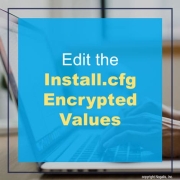Today, Infor announces the selection of Amazon Bedrock, a service for building and scaling generative applications, to deploy GenAI solutions embedded within Infor CloudSuite designed to accelerate customer value. This further deepens Infor’s 11-year relationship with Amazon Web Services (AWS) and the close collaboration and success the companies share after years of extending Infor solutions through AWS services. Per the press release, Infor has built industry-specific use cases on AWS technology that allows their customers to complete daily tasks faster with pre-trained models built on Amazon Bedrock. Infor CTO comments, “Infor is on a mission to democratize AI by making it accessible to all our customers, regardless of the size of their organization or the technical resources they employ. Our goal is to build products that deliver transformative technologies directly to those who benefit most – the front-line people using Infor solutions. At Infor, we believe that merely giving customers the tools to apply GenAI isn’t enough. Our Industry AI approach combines both the tools and deep industry capability and expertise to collaboratively work with customers to build and offer solutions that drive real value.” Furthermore, Infor has released hundreds of proven predictive and prescriptive AI solutions through its Augmented Intelligence Service, helping customers to drive operational efficiencies, grow revenue, enhance customer satisfaction and predict future demand, all built using AWS services such as Amazon SageMaker. With Amazon Bedrock at the core of its generative AI innovations, customers will now have access to 60 additional use cases by year end.



















